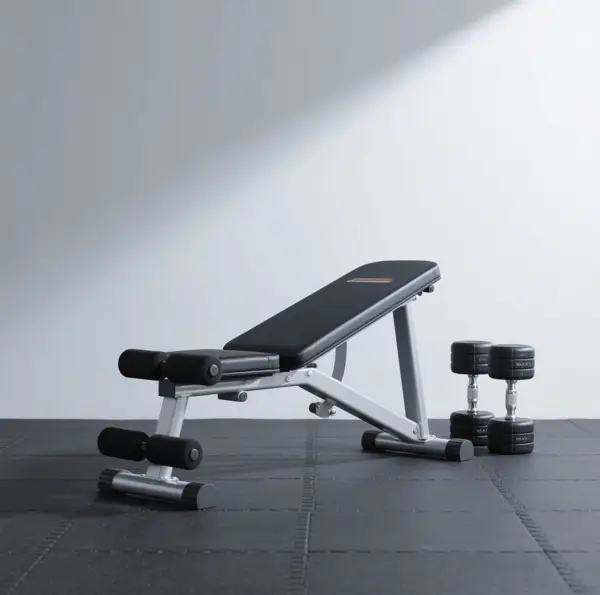Investing in home fitness equipment is a commitment to your health, but ensuring that investment lasts requires proper care and maintenance. As a leading fitness equipment manufacturer, we often hear from customers who want to keep their treadmills, dumbbells, and home gym systems in top condition for years to come. Regular maintenance not only extends the lifespan of your equipment but also ensures safe, effective workouts every time. In this guide, we’ll share expert tips on maintaining different types of fitness gear, common mistakes to avoid, and why manufacturer-recommended care matters.
Why Maintenance Matters for Home Fitness Equipment
Your fitness equipment works hard for you—whether it’s supporting your daily runs on the treadmill or bearing the weight of your strength training sessions. Without proper care, even the highest-quality gear can deteriorate prematurely, leading to:
- Reduced Performance: A treadmill with a dirty motor might slow down unexpectedly; a weight bench with loose bolts could wobble during use, affecting your form.
- Increased Safety Risks: Worn-out cables, slippery surfaces, or malfunctioning parts can turn a routine workout into an accident waiting to happen.
- Higher Repair Costs: Minor issues left unaddressed often escalate into major problems, requiring expensive replacements or professional repairs.
By incorporating simple maintenance habits into your routine, you can protect your equipment, enhance your workout experience, and save money in the long run. As a manufacturer, we design our products to be durable, but proper care is key to unlocking their full lifespan.
Essential Maintenance Tips for Common Home Fitness Equipment
Different types of fitness equipment have unique maintenance needs. Here’s how to care for the most popular home gym essentials:
1. Treadmills & Cardio Machines
Treadmills, stationary bikes, ellipticals, and rowers are workhorses of home cardio, but their moving parts need regular attention:
- Clean the Surface Regularly: Wipe down the console, handles, and running belt with a soft, damp cloth after each use to remove sweat and dust. Avoid harsh chemicals that can damage electronics or upholstery.
- Lubricate Moving Parts: Treadmill belts and bike chains require periodic lubrication to reduce friction. Check your manufacturer’s guidelines for the recommended lubricant type and frequency (usually every 100–200 miles for treadmills).
- Inspect Belts and Cables: Look for signs of wear, fraying, or looseness in belts, cables, and pedals. Tighten loose bolts and replace worn parts promptly to prevent further damage.
- Keep It Level: Ensure your cardio machine is placed on a flat, stable surface to prevent unnecessary strain on motors and frames.
2. Strength Training Equipment
Dumbbells, weight benches, home gym systems, and resistance machines rely on stability and smooth movement—both of which depend on proper maintenance:
- Clean and Sanitize: Wipe down weight plates, handles, and bench pads after use to prevent sweat buildup, which can cause rust or deterioration. Use a mild disinfectant for high-touch areas.
- Check for Loose Parts: Tighten bolts, nuts, and screws on weight benches, racks, and machine frames regularly. Loose components can affect stability and increase noise during workouts.
- Protect Weight Plates: Store dumbbells and weight plates on racks to avoid scratches or dents. Avoid dropping them, as impact can damage both the plates and your flooring.
- Lubricate Pulleys and Joints: For multi-functional gym systems, lubricate pulleys and hinges annually to ensure smooth movement and prevent rust.
3. Smaller Equipment & Accessories
Resistance bands, yoga mats, and foam rollers also need care to maintain their effectiveness:
- Wash Resistance Bands: Rinse bands with mild soap and water after use to remove sweat and oils, which can cause them to break down over time. Avoid exposing them to direct sunlight for long periods.
- Clean Yoga Mats: Use a mat cleaner or a mixture of water and vinegar to wipe down yoga mats weekly. Allow them to air dry completely before rolling them up.
- Store Properly: Keep smaller equipment in a cool, dry place to prevent mold or mildew. Hang resistance bands or store them flat to avoid stretching.
Common Maintenance Mistakes to Avoid
Even well-intentioned owners can make errors that harm their fitness equipment. Here are mistakes to steer clear of:
- Ignoring Manufacturer Guidelines: Each piece of equipment comes with a user manual outlining specific care instructions. Deviating from these (e.g., using the wrong lubricant or over-tightening bolts) can void warranties or cause damage.
- Skipping Regular Inspections: Waiting until something breaks to check your equipment often leads to more extensive repairs. Set a monthly reminder to inspect for wear, loose parts, or unusual noises.
- Using Harsh Cleaners: Abrasive chemicals or excessive water can damage electronics, upholstery, and metal surfaces. Stick to manufacturer-recommended cleaning products.
- Overloading Equipment: Exceeding weight limits or using equipment for purposes it wasn’t designed for (e.g., standing on a weight bench for pull-ups) strains components and shortens lifespan.
The Role of Manufacturer Support in Equipment Maintenance
Choosing a reputable fitness equipment manufacturer isn’t just about buying quality gear—it’s also about accessing support to keep it in shape. Here’s how manufacturers can help:
- Providing Maintenance Guides: Clear, detailed manuals with step-by-step care instructions make it easy to keep your equipment in top condition. We include comprehensive guides with all our products, along with video tutorials online.
- Supplying Replacement Parts: When parts wear out, having access to genuine replacements ensures proper fit and performance. We offer a wide range of replacement parts, from treadmill belts to weight bench pads, to keep your equipment running smoothly.
- Offering Expert Advice: If you’re unsure about maintenance tasks, a manufacturer’s customer service team can provide guidance. Our experts are available to answer questions and troubleshoot issues.
- Extending Warranties for Well-Maintained Equipment: Some manufacturers reward proper care with extended warranty coverage, giving you extra peace of mind.


